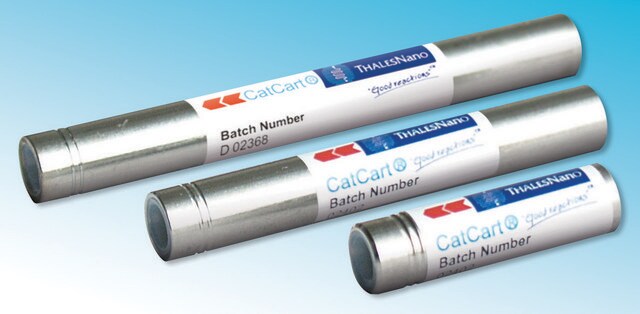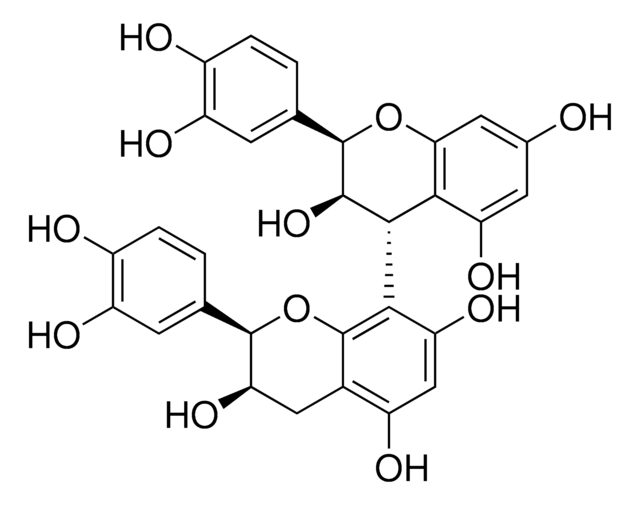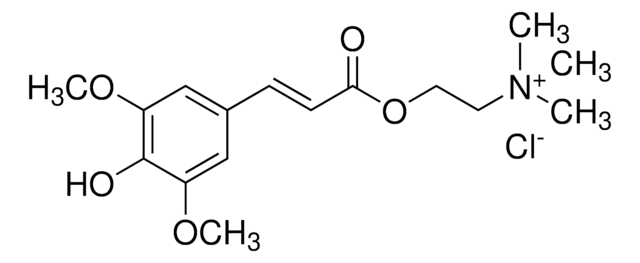SBR00072
Rhodamine Labeled D-galactosamine
Suitable for fluorescent microbial imaging
Faça loginpara ver os preços organizacionais e de contrato
About This Item
Fórmula empírica (Notação de Hill):
C31H33N3O9
Peso molecular:
591.61
Código UNSPSC:
12352201
NACRES:
NA.26
Produtos recomendados
Nível de qualidade
forma
solid
temperatura de armazenamento
−20°C
cadeia de caracteres SMILES
CC(C=C)=[N+](C)C.OC[C@H]1OC(O)[C@H](NC(C(C=C2)=CC(C([O-])=O)=C2C3=C4C=CC(C=C4OC5=C3C=CC(N(C)C)=C5)=[N+](C)C)=O)[C@@H](O)[C@H]1O.[O-]C=O
Descrição geral
Bacterial Peptidoglycan is a polymer consisting of glycans and short peptides, a multilayer rigid structure that forms the cell wall. D-sugars and D-amino acids (DAA) are metabolically incorporated into the bacterial cell. It was recently discovered that transpeptidases enzymes catalyze the metabolic incorporation of exogenous D-sugars and DAAs with almost no restriction of the side-chain identity. Modification of a D-sugar, such as D-Galactosamine, with molecular fluorophores provides fluorescent probes that can efficiently label in situ peptidoglycan in diverse bacterial species.
Rhodamine-labelled D-Galactosamineis a fluorescent derivative of D-Galactosaminethat is obtained by a synthetic conjugation of D-Galactosamineto the fluorophore. Rhodamine-labelled D-Galactosamine has high biocompatibility and suitability for labeling peptidoglycans in live bacteria. Additionally, it can be used in tandem with other stains such as FITC-labelled Alanine (#SBR00049) to distinguish between different bacteria. Other compatible products useful for live staining include: Rhodamine B labelled Polymyxin B, and Ramoplanin, FITC Labelled D-Lysine, Alanine or Vancomycin and Dansyl labelled polymyxin B (catalog numbers: SBR00036, SBR00047, SBR00050, SBR00049, SBR00028, SBR00029).
Rhodamine-labelled D-Galactosamineis a fluorescent derivative of D-Galactosaminethat is obtained by a synthetic conjugation of D-Galactosamineto the fluorophore. Rhodamine-labelled D-Galactosamine has high biocompatibility and suitability for labeling peptidoglycans in live bacteria. Additionally, it can be used in tandem with other stains such as FITC-labelled Alanine (#SBR00049) to distinguish between different bacteria. Other compatible products useful for live staining include: Rhodamine B labelled Polymyxin B, and Ramoplanin, FITC Labelled D-Lysine, Alanine or Vancomycin and Dansyl labelled polymyxin B (catalog numbers: SBR00036, SBR00047, SBR00050, SBR00049, SBR00028, SBR00029).
Aplicação
Fluorescent labeled sugars can be used for many applications including:
- Bacterial cell wall morphology
- Bacterial cell wall formation or remodeling activity
- Bacterial viability/activity
- Identify bacterial activity on surfaces or in substances
- Differentiation between various bacterial strains according to their incorporation profile of different D amino acids and sugars
Nota de análise
- Fluorescent microscopy application: Rhodamine-labelled D-Galactosamine has excitation/emission wavelength range at 542-582/604-644 nm.
- The recommended working concentration in fluorescent microscopy imaging application is between 250-500 µM in working medium.
- Aliquots of the DMSO solution can be stored at -20⁰C, protected from light for at least one month.
produto relacionado
Nº do produto
Descrição
Preços
Código de classe de armazenamento
11 - Combustible Solids
Classe de risco de água (WGK)
WGK 3
Ponto de fulgor (°F)
Not applicable
Ponto de fulgor (°C)
Not applicable
Certificados de análise (COA)
Busque Certificados de análise (COA) digitando o Número do Lote do produto. Os números de lote e remessa podem ser encontrados no rótulo de um produto após a palavra “Lot” ou “Batch”.
Já possui este produto?
Encontre a documentação dos produtos que você adquiriu recentemente na biblioteca de documentos.
Phuong Luong et al.
ACS infectious diseases, 8(4), 889-900 (2022-03-19)
Bacterial cell envelope glycans are compelling antibiotic targets as they are critical for strain fitness and pathogenesis yet are virtually absent from human cells. However, systematic study and perturbation of bacterial glycans remains challenging due to their utilization of rare
Sheng Hong et al.
Chemical science, 11(17), 4403-4409 (2020-11-20)
Accumulating evidence indicates that colonized microbes play a crucial role in regulating health and disease in the human body. Detecting microbes should be essential for understanding the relationship between microbes and diseases, as well as increasing our ability to detect
Yen-Pang Hsu et al.
Chemical science, 8(9), 6313-6321 (2017-10-11)
Fluorescent d-amino acids (FDAAs) enable efficient in situ labeling of peptidoglycan in diverse bacterial species. Conducted by enzymes involved in peptidoglycan biosynthesis, FDAA labeling allows specific probing of cell wall formation/remodeling activity, bacterial growth and cell morphology. Their broad application
Helene Botella et al.
mBio, 8(5) (2017-09-14)
Peptidoglycan (PG), a polymer cross-linked by d-amino acid-containing peptides, is an essential component of the bacterial cell wall. We found that a fluorescent d-alanine analog (FDAA) incorporates chiefly at one of the two poles in Mycobacterium smegmatis but that polar
Nossa equipe de cientistas tem experiência em todas as áreas de pesquisa, incluindo Life Sciences, ciência de materiais, síntese química, cromatografia, química analítica e muitas outras.
Entre em contato com a assistência técnica






